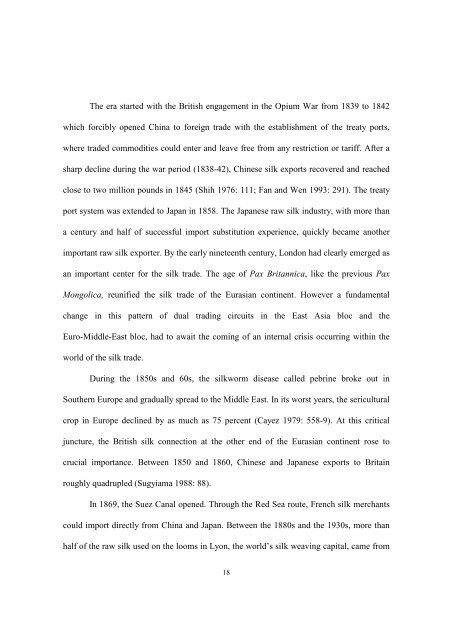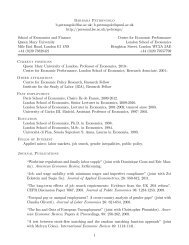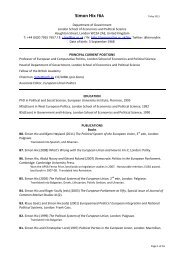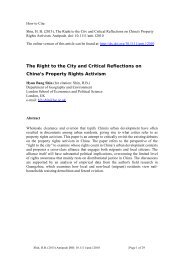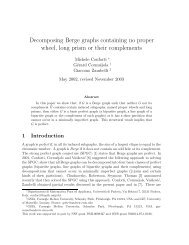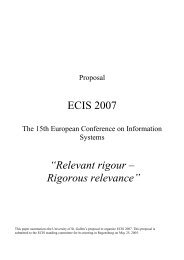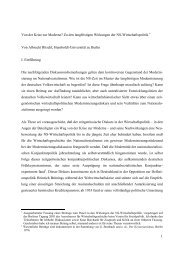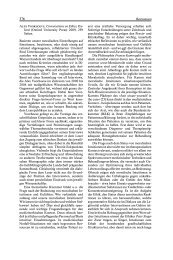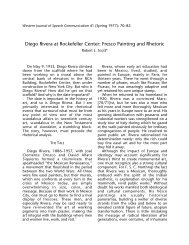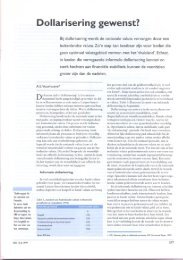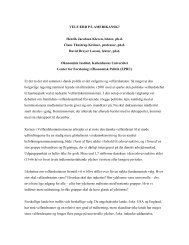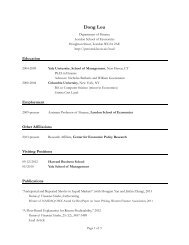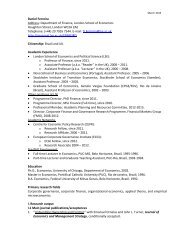Reference: MA, Debin. “The Great Silk Exchange: How the World ...
Reference: MA, Debin. “The Great Silk Exchange: How the World ...
Reference: MA, Debin. “The Great Silk Exchange: How the World ...
Create successful ePaper yourself
Turn your PDF publications into a flip-book with our unique Google optimized e-Paper software.
The era started with <strong>the</strong> British engagement in <strong>the</strong> Opium War from 1839 to 1842<br />
which forcibly opened China to foreign trade with <strong>the</strong> establishment of <strong>the</strong> treaty ports,<br />
where traded commodities could enter and leave free from any restriction or tariff. After a<br />
sharp decline during <strong>the</strong> war period (1838-42), Chinese silk exports recovered and reached<br />
close to two million pounds in 1845 (Shih 1976: 111; Fan and Wen 1993: 291). The treaty<br />
port system was extended to Japan in 1858. The Japanese raw silk industry, with more than<br />
a century and half of successful import substitution experience, quickly became ano<strong>the</strong>r<br />
important raw silk exporter. By <strong>the</strong> early nineteenth century, London had clearly emerged as<br />
an important center for <strong>the</strong> silk trade. The age of Pax Britannica, like <strong>the</strong> previous Pax<br />
Mongolica, reunified <strong>the</strong> silk trade of <strong>the</strong> Eurasian continent. <strong>How</strong>ever a fundamental<br />
change in this pattern of dual trading circuits in <strong>the</strong> East Asia bloc and <strong>the</strong><br />
Euro-Middle-East bloc, had to await <strong>the</strong> coming of an internal crisis occurring within <strong>the</strong><br />
world of <strong>the</strong> silk trade.<br />
During <strong>the</strong> 1850s and 60s, <strong>the</strong> silkworm disease called pebrine broke out in<br />
Sou<strong>the</strong>rn Europe and gradually spread to <strong>the</strong> Middle East. In its worst years, <strong>the</strong> sericultural<br />
crop in Europe declined by as much as 75 percent (Cayez 1979: 558-9). At this critical<br />
juncture, <strong>the</strong> British silk connection at <strong>the</strong> o<strong>the</strong>r end of <strong>the</strong> Eurasian continent rose to<br />
crucial importance. Between 1850 and 1860, Chinese and Japanese exports to Britain<br />
roughly quadrupled (Sugyiama 1988: 88).<br />
In 1869, <strong>the</strong> Suez Canal opened. Through <strong>the</strong> Red Sea route, French silk merchants<br />
could import directly from China and Japan. Between <strong>the</strong> 1880s and <strong>the</strong> 1930s, more than<br />
half of <strong>the</strong> raw silk used on <strong>the</strong> looms in Lyon, <strong>the</strong> world’s silk weaving capital, came from<br />
18


